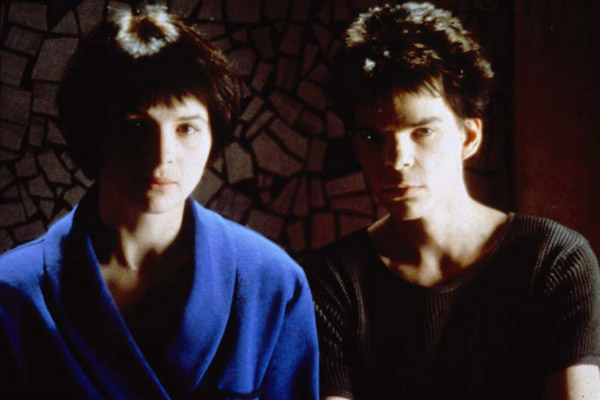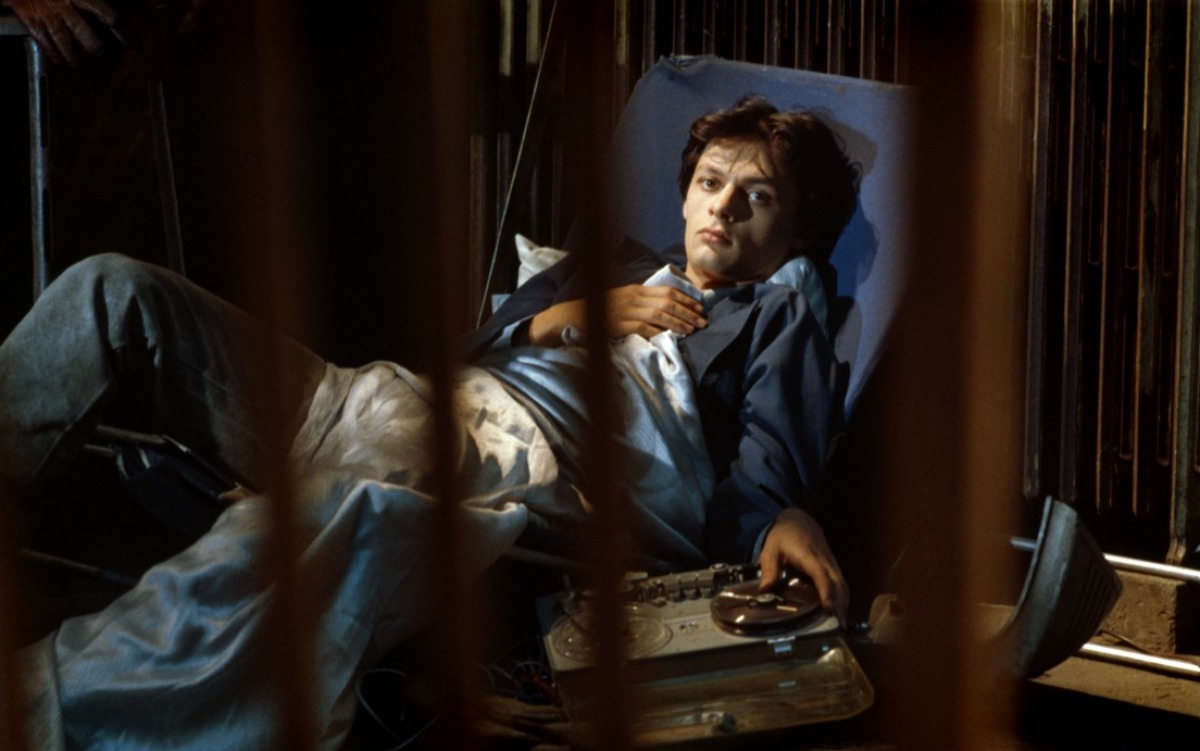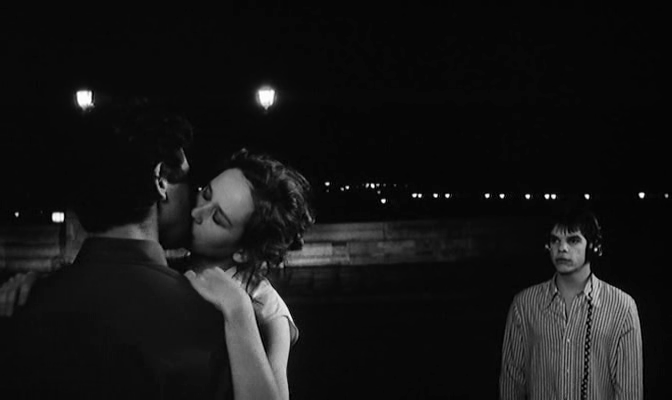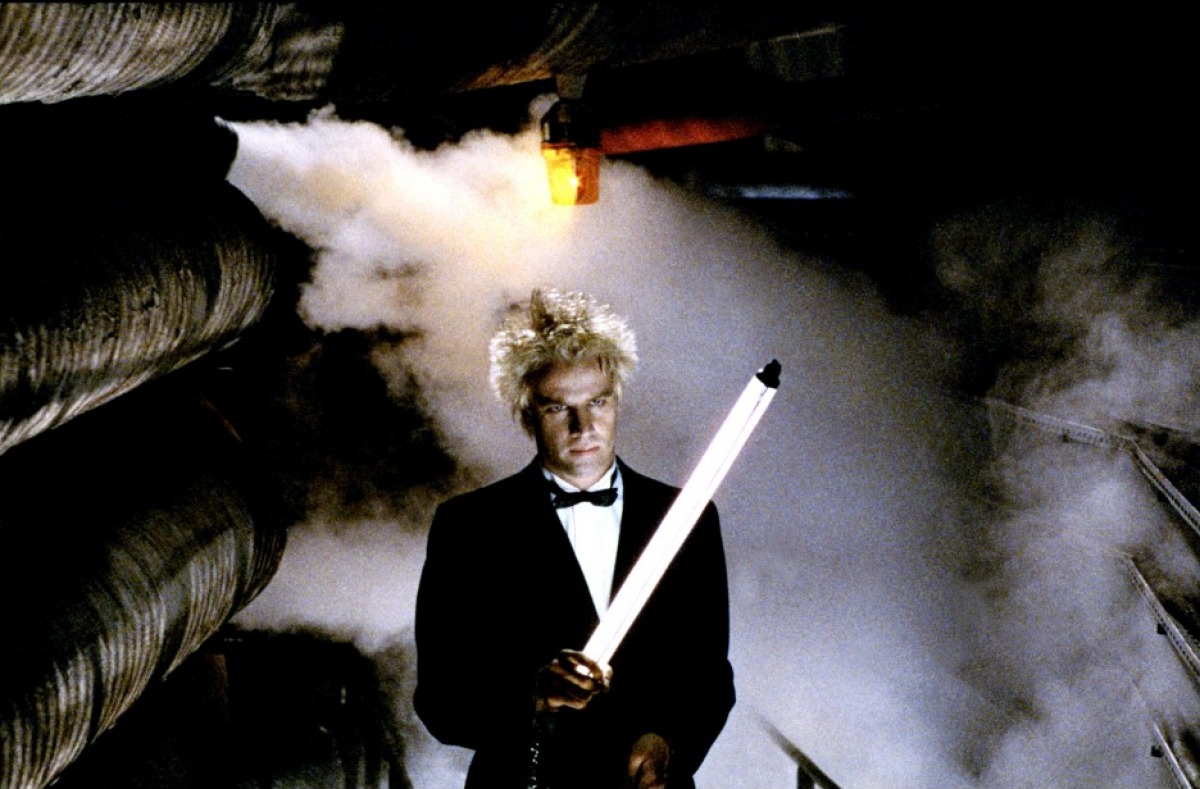
French director Luc Besson’s Lucy was a massive international hit, financially and critically – though less so with the scientific community which sniffily took umbrage with the theory that 100% brain activity will turn you into a memory stick. As such it marked a return to form for Besson, who has spent the past decade or so setting up EuropaCorp Studios and masterminding hugely popular franchises like Taxi, The Transporter and Taken.
That these movies were treated with revulsion by the French cognoscenti was par for the course with Besson. Indeed, he evidently takes great pleasure in insulting those who seek to dictate and control the critical consensus. This locking of antlers between the art world and his broader commercial instincts is something Besson has had to put up with since his career took off in the mid-1980s.
His initial success coincided with the rise of two other French directors who shared Besson’s gift for capturing the rebel-yell of disaffected youth. Bright, bold and as stylish as an Armani commercial, their work was dismissed by the French critical aristocracy as empty, vacuous apolitical rock-videos. When critic Raphaël Bassan assembled Besson, Jean-Jacques Beineix and Leos Carax together under the collective “Cinéma du Look” in 1989, he wasn’t being entirely complementary.
As well as idolising François Truffaut, Jean-Luc Godard or Alain Resnais, the Cinéma du Look directors emulated Hollywood directors like Spielberg, De Palma, Scorsese and Coppola. That this should have inspired such vitriol from the Cahiers du Cinéma crowd was surprising, given that respected organ’s grand tradition of rejecting stifling hegemonies.
It was Truffaut who along with André Bazin, used the auteur theory to deify such directors of populist entertainment as Robert Aldrich, Terence Fisher and most famously Alfred Hitchcock. Why should the Cinéma du Look directors feel any different about their own contemporary Hollywood idols? (It is worth noting that Leos Carax got a considerably more comfortable ride from Cahiers du Cinéma than Besson or Beineix, but then Carax was a former Cahiers writer.)
Neither Carax, Besson nor Beineix welcomed their classification as Cinéma du Look directors, and with each new film they deliberately veered in different directions avoiding stagnation and challenging their audiences. Several motifs unite their work in the 1980s, apart from the dazzling (usually) neon-heavy visuals.
There was an obsessive preoccupation with youth and the struggle to be young, a mistrust of the establishment and of the older generation. Doomed love and amour fou were prevalent themes, as was the regular appearance of motorbikes being chased through tunnels.
Both Beineix and Besson had served their apprenticeships making commercials and their movie work followed on the coat-tails of fellow ad-men like Alan Parker, Ridley Scott, Hugh Hudson and Adrian Lyne. The ‘Look’ that Beineix, Besson and Carax pioneered would go on to influence mainstream directors like Tony Scott and Michael Mann – his TV show Miami Vice especially.
It is part of the ever-spinning hoop of existence that teenage children will reject the certainties of their parents’ generation, and that is what happened with the Cinéma du Look. The French Nouvelle Vague directors of the 1950s and 60s had become Gods by the 1980s. The social-realism that had defined their movement had in its own way become as clichéd as the Tradition of Quality cinema it had itself broken away from so deliberately.
Perhaps it is because the Nouvelle Vague movement is still so universally revered and has so successfully stood the test of time, that the Cinéma du Look directors have yet to attain a similar significance but now, thirty-odd years later and with the 1980s in vogue once again, the time is ripe to revisit this vibrant French phenomenon that changed the cinematic landscape so vividly.
10. Diva (1981)
When it was first released in France, Jean-Jacques Beinex’s genre-jigsaw of a film was held up to ridicule and dismissed as an incoherent, meaningless mess. Following a successful international release and box office glory at home, Diva was hastily reappraised and won four Césars.
Such was the impact of Beinex’s glassy, stylised visuals (made even more intense by the documentary-influenced social realism of the 1970s that preceded it) that Diva is now considered Patient Zero in the Cinéma du Look canon. Fairly standard cop movie tropes are disassembled into a grand buffet of unforgettable images as Jules, an opera-obsessed postman is pursued relentlessly through Paris by shady villains and a bent copper.
There is something pleasingly metaphysical about the fact that the Macguffin they seek is not drugs or money, but a rare recording of an opera singer in full voice; as though it is Jules’s very soul that he is trying to protect from the devil’s clutches. Special mention has to be given to the moped chase through the Paris metro, which retains its intensity to this day.
9. Boy Meets Girl (1984)
Leos Carax’s debut, made when he was only 22 is as assured as it is riddled with self doubt. A young, recently dumped aspiring film maker (Carax’s regular collaborator Denis Lavant) meets Mireille (Mireille Perrier), just as her own relationship comes to a shouty end and they bond over their recent heartbreaks.
Carax revels in Godardian coolness but undercuts it with raw vulnerability. The black and white photography by Jean-Yves Escoffier is as luxurious as one of his namesake’s Peach Melbas and Carax’s love of movies is stitched through every gloriously monochrome frame.
8. Subway (1985)
He had already made waves in 1983 with the post-apocalyptic Le Dernier Combat, but Subway marked the moment when the Luc Besson train really pulled into the station. It is an ode to Besson’s critic-baiting adoration of mainstream Hollywood, but the final product is unique, relentless and shot through with Gallic cool.
Fred is a bank robber who, following a thrilling police chase, takes refuge in the Paris underground where he is taken in by a subterranean gang of pickpockets – including a pre-hair loss Jean Reno and Betty Blue’s Jean-Hughes Anglade on rollerskates. Fred uses the labyrinthine system of lifts and tunnels to elude the police and vengeful drug dealers, while flirting with Isabelle Adjani, the socialite wife of the gangster he has just ripped off.
The them-and-us social satire is as clumsy and half-baked as you might expect from Besson, but the film succeeds through its rampant, cocksure energy. It’s a great film to watch when you are young and determined to hate anyone over the age of 30. Also, with a synth score by Eric Serra, enormous spiky bleached hair-dos and its rock-band sub-plot, Subway might be the most 1980s anything ever made by anyone.
7. Mauvais Sang (1986)

Leos Carax’s second movie is ostensibly a vaguely dystopian crime thriller – an Aids-like plague is wiping out people who are ‘loving without love’ (the ‘bad blood’ of the title) and a gang of thieves hire jailbird Dennis Lavant to steal the anti-virus.
This is merely the coat-hanger over which a multi-coloured dreamcoat is hung – a visual poem about the brain-wrecking trauma of falling madly in love, made by a director so clearly in love with cinema that you can feel the celluloid being hugged. A street-level, almost feral figure, Alex (Lavant) falls for his employer’s young wife Anna (Juliette Binoche, never more delicate or fragile) and is transformed by the new-beating heart within him.
This exhilaration is summed up in an extraordinary two-minute tracking-shot of Alex sprinting down the street, beating himself up, flailing like an adult foetus kicking itself into life and then cartwheeling to David Bowie’s Modern Love. A teenage Julie Delpy stands out too as Alex’s jealous spurned young lover.


